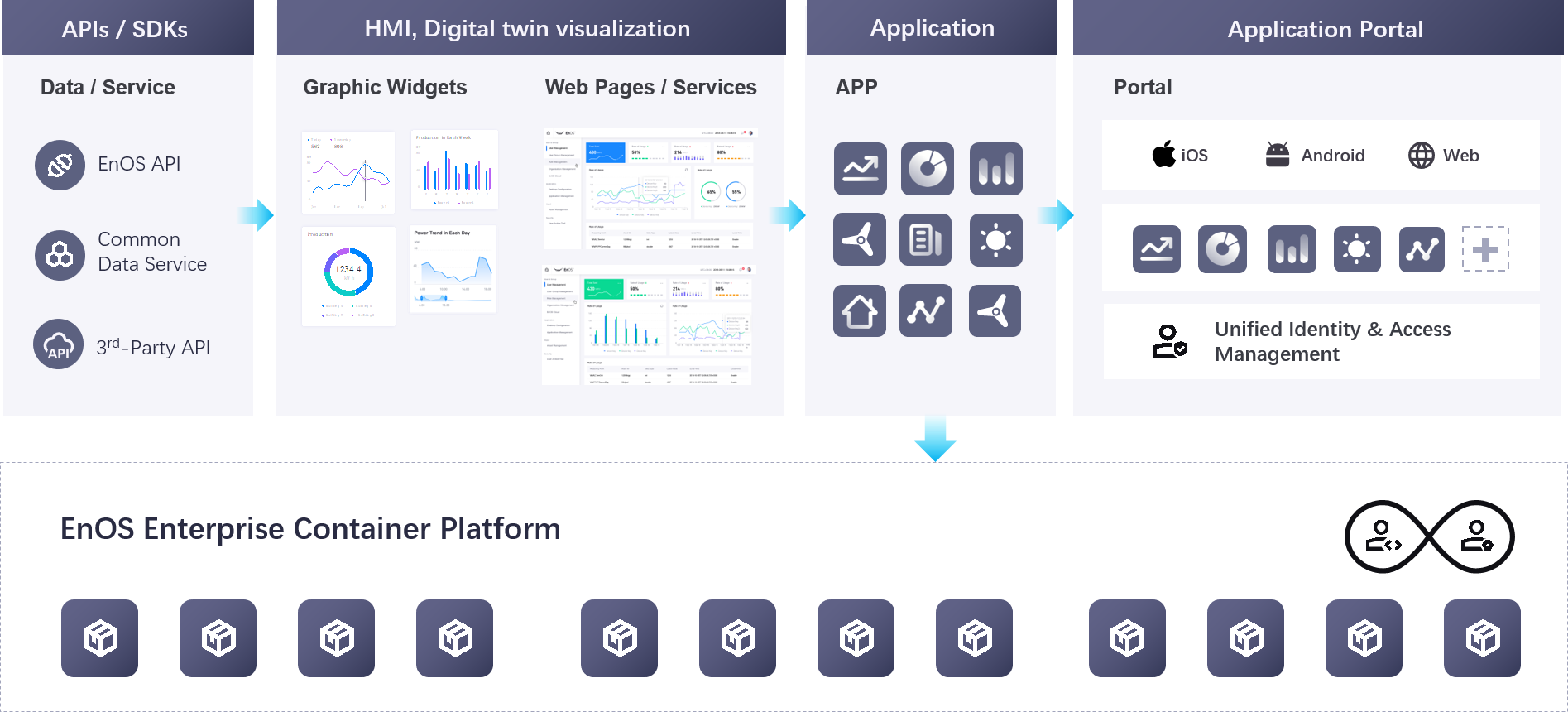Application Enablement Platform Overview¶
The Application Enablement Platform provides toolkits, libraries, and services that help you leverage the IoT data and common data services and rapidly build, deploy, and scale applications. Through a loosely coupled micro-service architecture, EnOS™ encapsulates the complexity of the underlying technology, lowers the barrier of application development, and accelerates monetization time.
EnOS™ Application Enablement Platform provides end-to-end lifecyle management for applications, shown in the figure below.

Application Management¶
Application development on EnOS starts from registering a service account (SA) for an application, and the application can then access EnOS services and data by presenting its SA.
Application Portal¶
EnOS Application Portal is a universal and flexible EnOS-based application portal for permission management and application access. It provides application developers with a unified RBAC-based permission system and login portal, and helps to ensure that end users can smoothly access and use applications in the same system with the same permissions, improving security control and reducing R&D costs.
Digital Twin Visualization¶
Integrated with EnOS Application Portal, the Digital Twin Visualization (DTV) service helps system integrators and business developers to develop data visualization and indicator analysis visualization applications through low code development, realizing quick development of IoT monitoring and operation applications.
Business Process Management¶
EnOS Business Process Management provides a means to model, manage, and operate the business processes in a digitalized form. The flexible orchestration and cross-system integration capabilities of BPM enables integration with existing applications and systems, helping users to streamline collaboration and automate inconsistent and laborious manual work. The visual and low-code process and form designer in EnOS BPM also ensures anyone can design a process with minimal coding knowledge.
Notification Management¶
EnOS Notification Management service is a user-oriented push service that applies to EnOS services and registers EnOS applications.
API Management¶
The API Management is a lightweight API lifecycle management service that enables applications to publish their services and capabilities through APIs. The service allows API developers to quickly develop and host APIs and API consumers to quickly invoke APIs.
Enterprise Container Platform¶
Based on the micro-service architecture, the Enterprise Container Platform offers end-to-end services that simplifies the development, testing, operation, and maintenance of applications.
Developer Studio: Allows you to manage your application lifecycle on a project basis. Supports role-based access control to facilitate multiple roles to collaborate on a project and provides powerful git hosting and pipeline orchestration to streamline build, test, and deploy applications.
Supports various programing languages such as Java, Node.js, Python, and Go.
Supports orchestrating pipelines such as code scan, build, deployment, and Jenkins.
Container Cluster Management: A one-stop container operation and management that enables applications to scale up and down easily if needed. A centralized cluster resource quota management, network policy configuration, storage resource management, and other services for application development and deployment.
EnOS HMI¶
The EnOS HMI enables you to quickly build visualization and monitoring applications. The tool has rich built-in visual elements which can simulate the equipment and charts of various industries fields to help in asset data and dynamics visualization. You can also use your own graphics when using the tool.
Common Data Service¶
The Common Data Service is used to complement the dimensions and breadth of data, such as weather, traffic, and market data (for example, electricity pricing) to help users gain insights and make more accurate business judgments. For example, an application might use the collected device data and weather data to run algorithms to predict the amount of electricity generated.